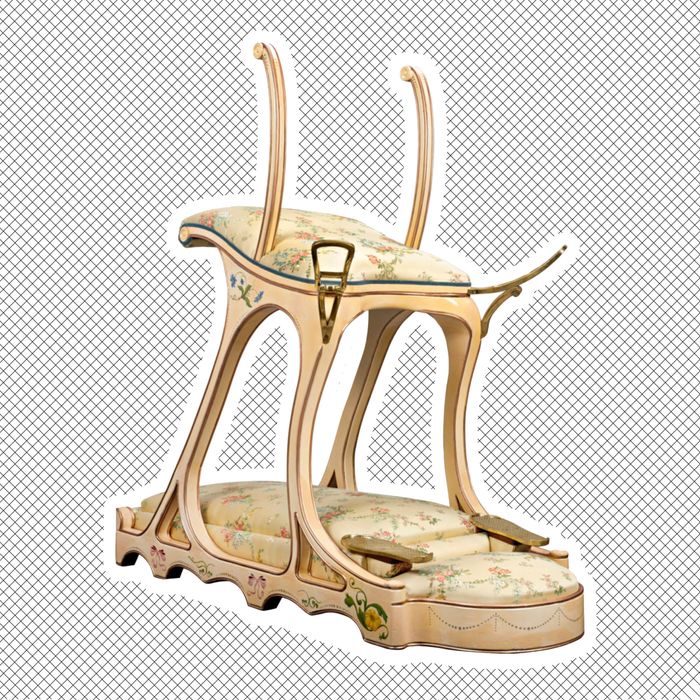Describing Villa Venus (Eric Veen's floramors), Van Veen (the narrator and main character in VN's novel Ada, 1969) mentions a special chair built for King Victor (the Antiterran ruler of the British Commonwealth who frequents floramors):
According to Eric’s plan, Councils of Elderly Noblemen were responsible for mustering the girls. Delicately fashioned phalanges, good teeth, a flawless epiderm, undyed hair, impeccable buttocks and breasts, and the unfeigned vim of avid venery were the absolute prerequisites demanded by the Elders as they had been by Eric. Intactas were tolerated only if very young. On the other hand, no woman who had ever borne a child (even in her own childhood) could be accepted, no matter how free she was of mammilary blemishes.
Their social rank had been left unspecified but the Committees were inclined, initially and theoretically, to recruit girls of more or less gentle birth. Daughters of artists were preferred, on the whole, to those of artisans. Quite an unexpected number turned out to be the children of peeved peers in cold castles or of ruined baronesses in shabby hotels. In a list of about two thousand females working in all the floramors on January 1, 1890 (the greatest year in the annals of Villa Venus), I counted as many as twenty-two directly connected with the royal families of Europe, but at least one-quarter of all the girls belonged to plebeian groups. Owing to some nice vstryaska (shake-up) in the genetic kaleidoscope, or mere poker luck, or no reason at all, the daughters of peasants and peddlers and plumbers were not seldom more stylish than their middle-middle-class or upper-upper-class companions, a curious point that will please my non-gentle readers no less than the fact that the servant-girls ‘below’ the Oriental Charmers (who assisted in various rituals of silver basins, embroidered towels and dead-end smiles the client and his clickies) not seldom descended from emblazoned princely heights.
Demon’s father (and very soon Demon himself), and Lord Erminin, and a Mr Ritcov, and Count Peter de Prey, and Mire de Mire, Esq., and Baron Azzuroscudo were all members of the first Venus Club Council; but it was bashful, obese, big-nosed Mr Ritcov’s visits that really thrilled the girls and filled the vicinity with detectives who dutifully impersonated hedge-cutters, grooms, horses, tall milkmaids, new statues, old drunks and so forth, while His Majesty dallied, in a special chair built for his weight and whims, with this or that sweet subject of the realm, white, black or brown. (2.3)
The love chair (French siege d'amour) was a device created by a French furniture manufacturer in the early 20th century to allow the corpulent British King Edward VII (the eldest son of Queen Victoria) to have sex with two or more women simultaneously. The chair was first created by Soubrier, a furniture manufacturer, which has now (as of 2018) become the current owner of the device. Prior to this, however, the King was a regular visitor at Le Chabanais in Paris, a French brothel, and the chair was designed specifically for the King's visits there. The chair allowed him to indulge his sexual fantasies without crushing his female partners. While Peter Hof claimed the chair had never been on public display, the Daily Express reported in 2015 that it was on display in the Musée d'Orsay.

I saw this chair in Private Lives of the Monarchs, a film hosted by historian Tracy Borman.
